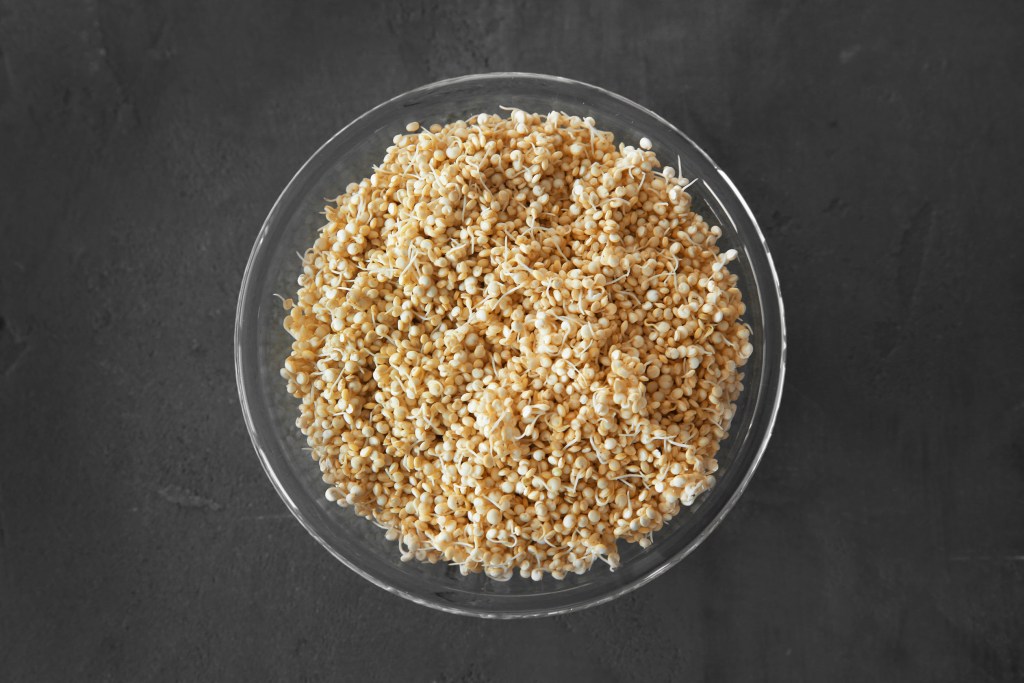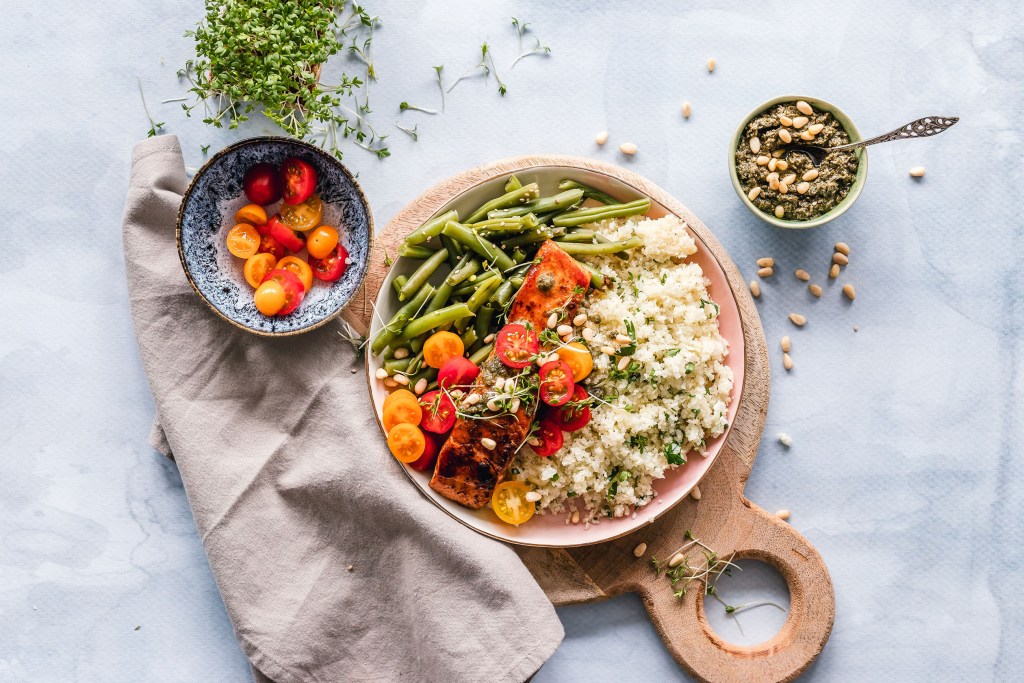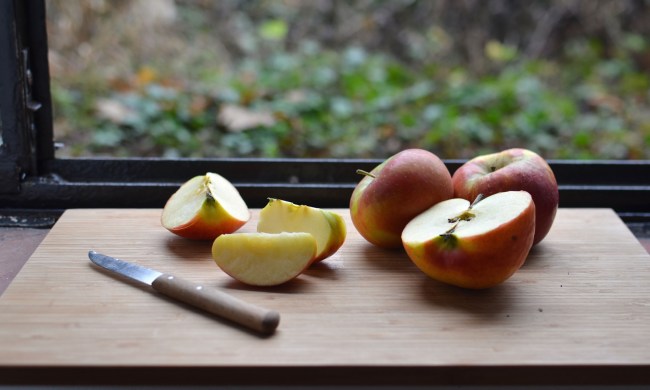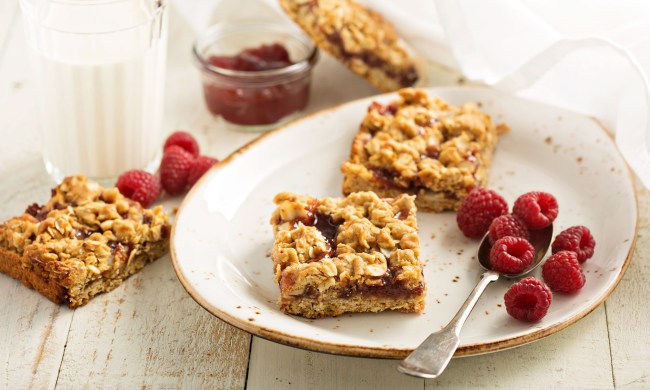Quinoa is no longer just a trendy food; it’s secured its status as a true “super grain.” That staying power is a testament to its myriad health benefits and versatility. This grain is gluten-free, low-carb, chock full of protein, and contains all nine essential amino acids. But what if there was a way to get even more from this superfood? Sprouted quinoa is just the latest iteration of this esteemed health food.
Sprouted grains, in general, are said to be healthier and better tasting than their non-sprouted counterparts. What does that mean in terms of quinoa? Keep reading to learn.

What is the difference between regular quinoa and sprouted quinoa?
Despite actually being a seed gathered from the Chenopodium quinoa plant, quinoa is considered a whole-grain carbohydrate. Whole grains (cereal grains) are typically seeds extracted from grasses, not plants. Since the way we eat quinoa is similar to whole grain, the nutrition world considers it one (or technically a pseudo-cereal).
Sprouted quinoa is simply a regular quinoa seed that has begun to sprout into a fully grown plant but is interrupted early in the process. To halt the growing progression at the right moment, whole grain seeds are soaked with water and nourished with the proper amount of warmth and moisture. The process can be completed at food manufacturing plants using specialized equipment or in your own home using a vented jar. Once the seeds germinate, they are dried so they can be safely sold and consumed. If you’re sprouting seeds yourself, it’s best to cook the grains before eating them because the moist environment can be a breeding ground for bacteria. Crush them into a paste for baking, or cook the sprouted quinoa before adding it to a meal.

Which is better for you?
Quinoa is the ultimate superfood, so you know it has many nutritional benefits. One reason why this grain is so popular is that it’s an excellent source of complete protein, owing to the presence of those nine amino acids. One cup of cooked quinoa provides about eight grams of protein as well as five grams of fiber, keeping you full for longer and supporting a healthy digestive system. As a complex carbohydrate, your body takes longer to digest quinoa, providing you with more energy and making you feel more satisfied after eating it. To add to its luster, quinoa contains more vitamins and minerals than most other grains. It can be a significant source of manganese, magnesium, phosphorus, copper, zinc, and iron.
Sprouted quinoa has all the incredible health benefits of regular quinoa, but perhaps more so thanks to the germination process. When seeds begin to grow, some of the starch begins to break down, increasing their levels of nutrients. As the complex carbs (starch), proteins, and fats break down, your digestive system may have an easier time digesting the grains, too. The plant enzymes are essentially doing the work for your digestive system, which is why many people find it easier to absorb sprouted grains. Sprouting also breaks down phytate, a form of phytic acid that limits the body’s ability to take in minerals and vitamins. This process makes the nutrients more available.
While this all sounds good in theory, the reality can be a little more unpredictable. How much these components break down depends on the sprouting conditions and how long the seed germinates. So, while sprouted grains can be easier to digest and more nutritious, it’s difficult to say how significant the impact is. Plus, no two people have the same sensitivities or digestive systems. It’s difficult to determine if sprouted quinoa will be better for you if you don’t first try it.
And a product that contains sprouted whole grains is not guaranteed to have more nutrients than regular whole grain products. Like everything else, the nutrition label tells the story so be sure to consult it before you make your purchase.

What dishes can you make with these grains?
You can make many of the same dishes with standard and sprouted quinoa. Both can be a great way to add protein to your favorite salad. Or, you can make a delicious quinoa bowl with salmon, chicken, or black beans and some veggies like tomatoes, avocado, and sweet potato. For something a little more hands-on, try incorporating the superfood into soups, stir-frys, veggie burgers, or meatloaf. You can even bake bread or muffins with either type of quinoa. The possibilities are only limited by your imagination, so don’t be afraid to get creative with how you add quinoa into your meal plan.
Which is better regular quinoa or sprouted quinoa? It’s difficult to say because they are both highly versatile and nutritious. Sprouted grains are thought to contain more nutrients and be easier to digest than their un-sprouted counterparts. However, it’s hard to promise these effects since the germination process is so variable. Because of these potential advantages, sprouted quinoa is absolutely worth a try; you may find that you love it! But if not, regular quinoa is still a protein-packed super health food that can improve your diet and transform your mealtime.
BlissMark provides information regarding health, wellness, and beauty. The information within this article is not intended to be medical advice. Before starting any diet or exercise routine, consult your physician. If you don’t have a primary care physician, the United States Health & Human Services department has a free online tool that can help you locate a clinic in your area. We are not medical professionals, have not verified or vetted any programs, and in no way intend our content to be anything more than informative and inspiring.



